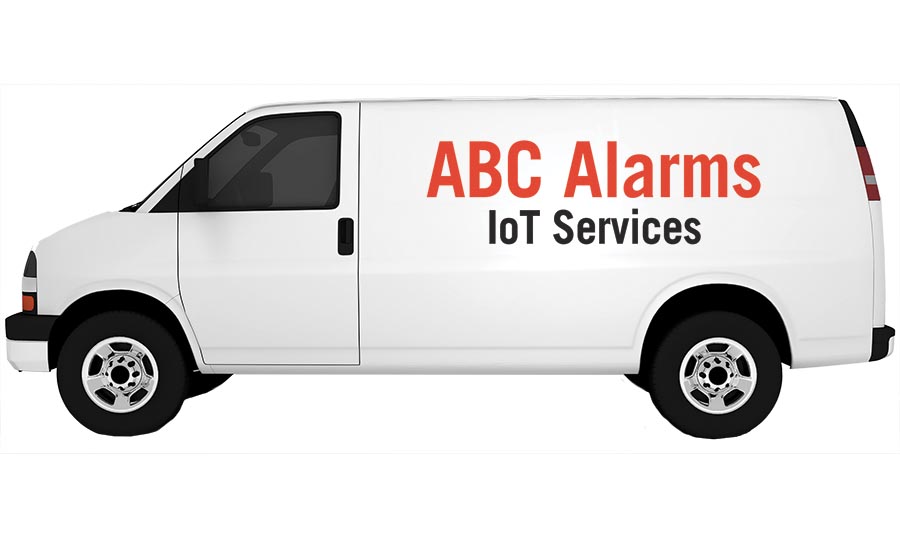Who Is Gonna “Own” the IoT?

The growth of IoT will spawn installation and servicing opportunities that will strengthen your business.
Consider the following statistics regarding the trends of smart home technology:
-
Based on various sources, approximately 6 million new and existing homes were purchased or changed owners in the U.S. during 2016.
-
Depending on which sources you follow, estimates of the number of IoT devices that will have been installed by 2020 are in the range of 28 billion units worldwide.
-
Most IoT devices connect to LANs and the Internet via wireless Wi-Fi.
-
In some European countries, when people move out of a home or apartment, they take everything, including the light bulbs.
Back to those stats in a moment, but first, I have a great affinity for my hometown newspaper, the Chicago Sun-Times. As newspapers are rapidly becoming obsolete in this digital/smart device age, I savor the opportunity to grab a paper at the local 7-Eleven and read it front to back, typically while eating lunch. The reason I like to read the paper as opposed to getting all my news from narrow-casted websites or TV channels is that I will often run into some information that I didn’t know would interest me. I like to know what’s going on in the world.
This brings us to the Sunday Feb. 19 Sun-Times. While slamming some White Castles, I read an article entitled “Connected Homes Could Pose Threat to New Owners.” The article starts off with a story about a lady who tries to set the thermostat in her new home to 70 degrees, but it always jumps up to 80. It turns out that the previous owner (perhaps a knucklehead?) was using his smart phone app to try to set the thermostat in his new domicile but was instead setting the temperature at his old house. The article continues to detail some of the problems that can occur when IoT-equipped homes change hands. A quote from Charles Henderson of IBM X-Force Red neatly sums up the problem: “As smart as the light switch is, it’s not smart enough to know it’s been sold.”
So let’s consider how a typical IoT equipped home’s connectivity is configured. In most cases IoT devices are Wi-Fi, and achieve their LAN and Internet connectivity through the homeowner’s Wi-Fi access point or router. In the case of my house, my IoT devices (mostly IP cameras) are connected via wired and Wi-Fi, and communications flow through my TRENDnet router/Wi-Fi access point to an AT&T U-verse DSL adapter which provides my Internet connectivity. For the IoT devices to function they need to be programmed onto my network, and in the case of Wi-Fi devices, they need to have the SSID and security code input before they can access the network.
Now, let’s say that I decide to sell my house and move. Once the deal is done, I am going to shut off my AT&T Internet service and most likely they will want their adapter box returned to them. I am also going to disconnect all of my network head-end equipment such as the TRENDnet router and switches. While I will likely grab the IP cameras sitting on the bookshelves, I will probably leave the “smart” thermostat and door locks in place.
Now the new owner moves in and probably wants the IoT devices to be functional. This is a problem because they will not know the SSID and security code of Wi-Fi devices that were used and the password(s) needed to access the devices, nor will they know the IP addressing scheme and passwords for any wired IoT devices. The new homeowner can attempt to contact the seller and maybe get the info, provided that the seller remembers such minutia or has the info written down. I suspect in many cases new homeowners will have to replace any IoT devices that are critical (the thermostat) and may have to invest in new IoT equipment if they want a “smart” home.
Right now we have a tremendous advantage over many of the DIY companies providing IoT devices.
Now let’s take a sober look at the future for electronic security contractors, i.e., my faithful readers. With mounting pressure from huge cable and telephone companies and the explosion of DIY IP cameras and alarm systems, the cold reality is that if we do not change our product and service offerings, our share of the low-end residential and light commercial alarm market is going to shrink if not disappear within the next 10 years. The false alarm problem has poisoned the well, and many end-users think that if they get the signal on their smartphone they have “security,” which of course we know is dead wrong.
I suggest you take a hard look at what could be done if your company becomes an “IoT service provider” along with your traditional alarm installation business model.
Right now we have a tremendous advantage over many of the DIY companies providing IoT devices. That advantage is women and men with tools on their belt and your logo on their shirt, driving around town in your trucks, installing new systems, fixing older ones, and interfacing with the customers. Real people talking to real people — what a novel idea. If your people are trained and equipped, they can easily morph into “IoT technicians” that can provide “smart” home devices and connectivity for end-users.
Here’s how I envision this business: When we install a number of IoT devices (thermostats, lighting controls, locks, etc.) in a home, we also install a separate 802.11ac high-bandwidth Wi-Fi router and/or wireless access point (WAP) that is then connected to the end user’s network via standard Cat5e/6 cabling. Because we have set up a separate WAP for the IoT devices, they cannot interfere with the client’s other networked devices. Our router is clearly labelled and says, “Property of ABC Alarm & IoT Services. Do not remove. Call 555-222-1111 for service.”
New products such as DoMotz provide live monitoring of IP devices and could also be added to the network to provide installing companies and end-users with critical information about their networks such as Internet down, new devices added, and other events.
When a home changes hands, the new owner will see the notice on the router and will contact your company to have you reconnect/reconfigure the IoT devices in the house so that they are again accessible and usable after the former owner pulled their LAN network hardware.
Mark my words — someday you will see a truck rolling down your street with an “IoT Installation & Service” banner on each side. Will it be one of your vehicles, or someone else’s?
Looking for a reprint of this article?
From high-res PDFs to custom plaques, order your copy today!





